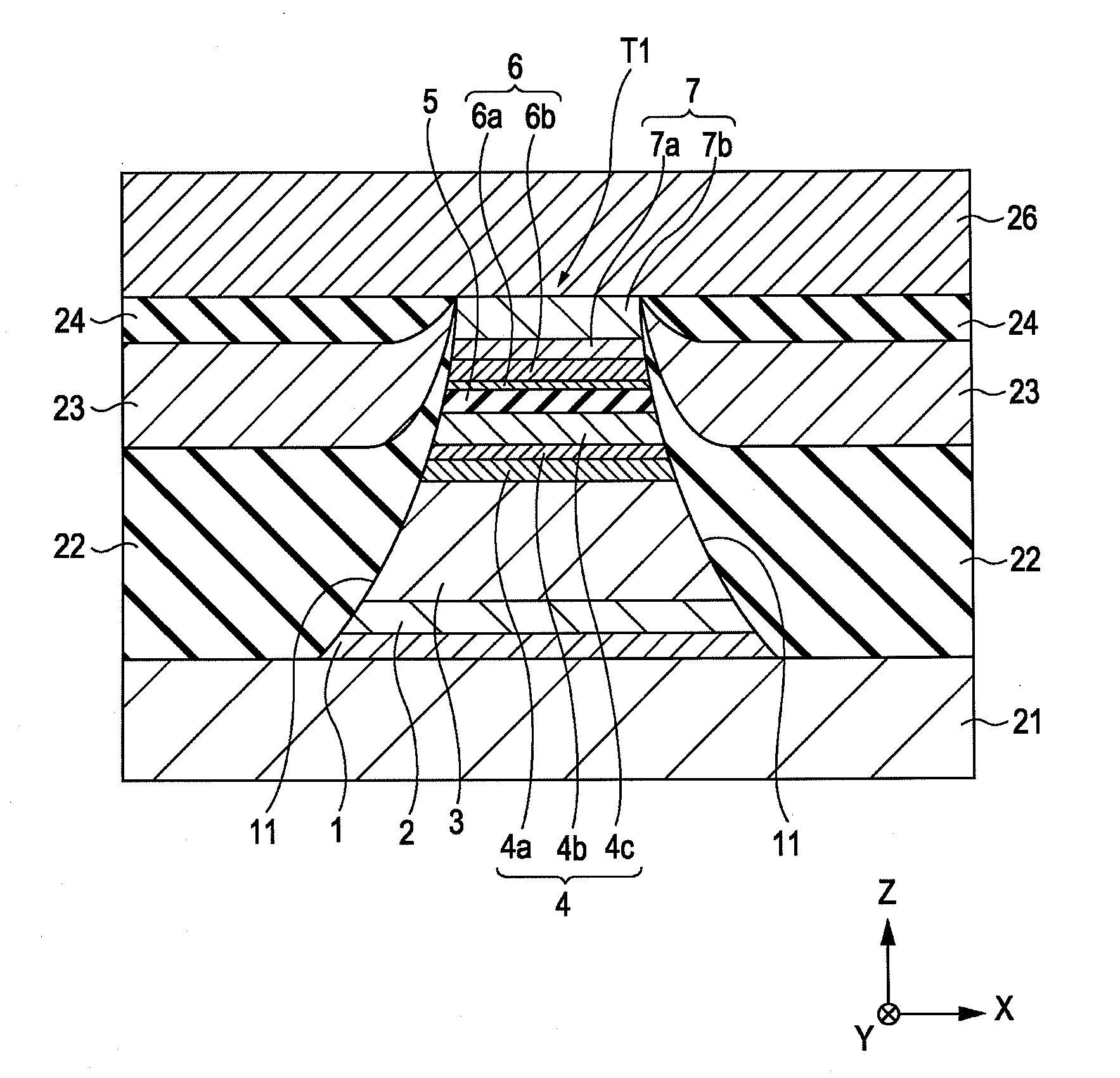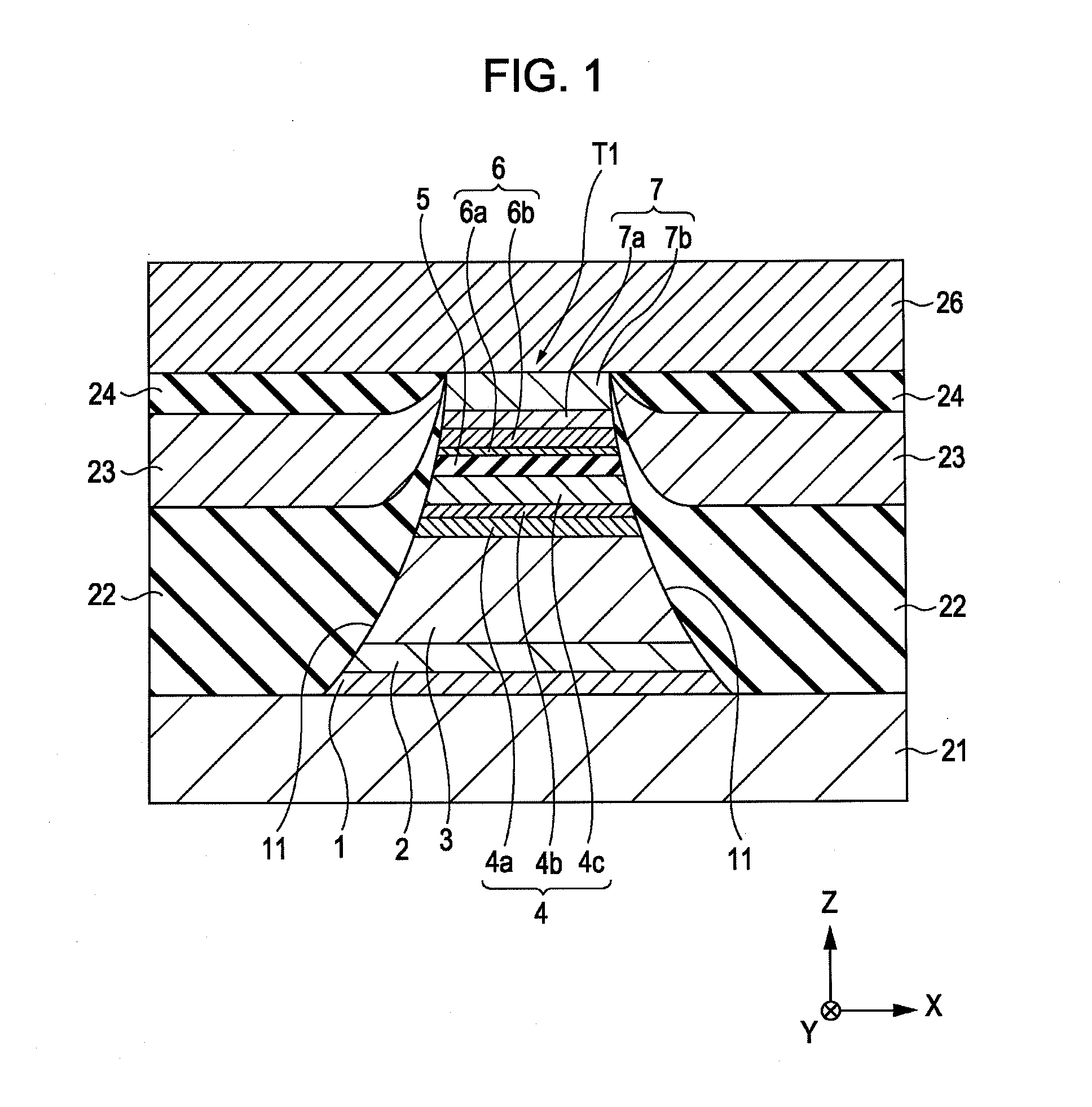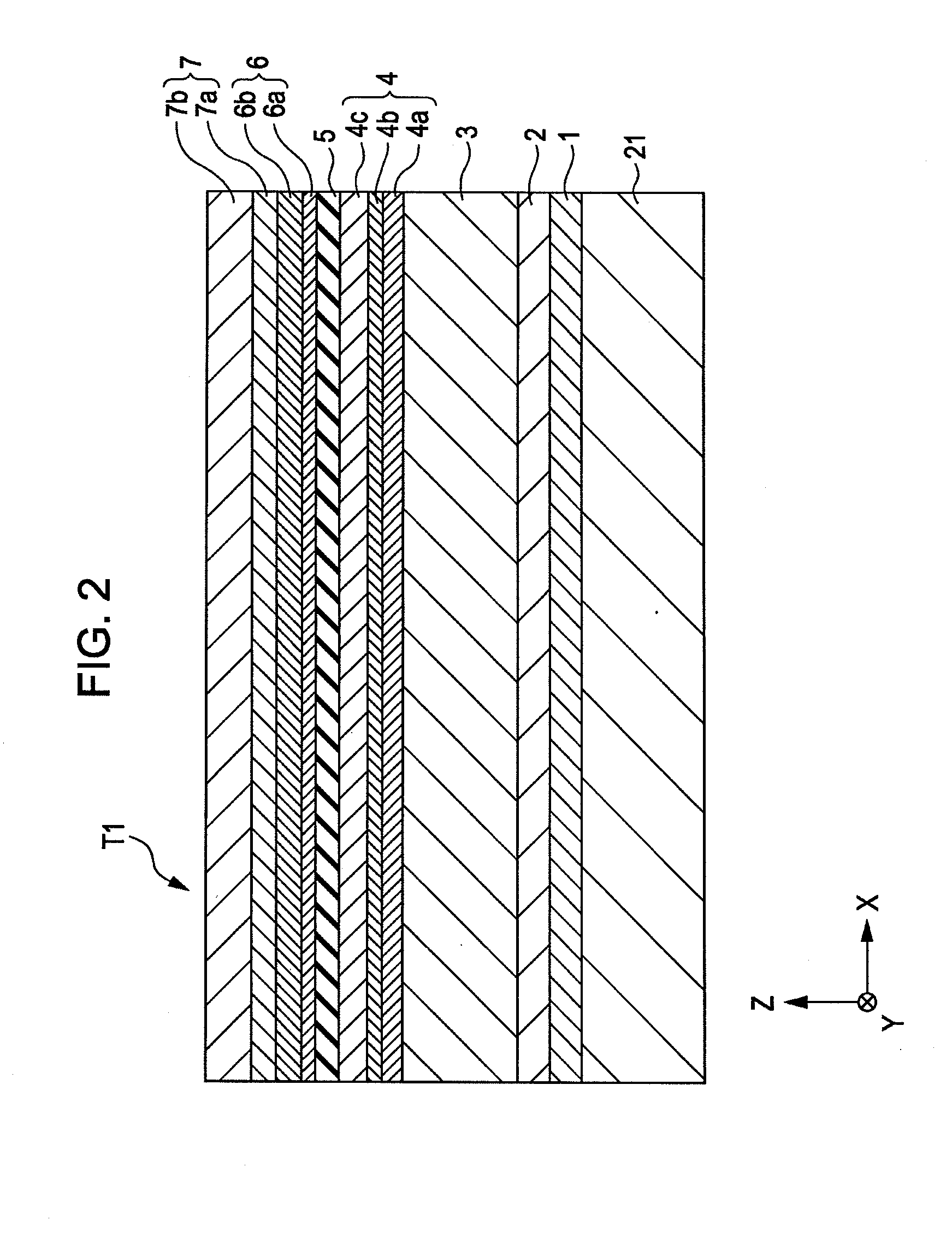Tunneling magnetic sensing element and method for manufacturing the same
- Summary
- Abstract
- Description
- Claims
- Application Information
AI Technical Summary
Benefits of technology
Problems solved by technology
Method used
Image
Examples
example 1
[0079]A tunneling magnetic sensing element shown in FIG. 1 was fabricated. A laminate T1 was formed by depositing, from the bottom, underlying layer 1;Ta(80) / seed layer 2;Ni49at %Fe12at %Cr39at %(50) / antiferromagnetic layer 3;Ir26at %Mn74at %(70) / pinned magnetic layer 4 [first pinned magnetic sublayer 4a;Co70at %Fe30at %(14) / nonmagnetic intermediate sublayer 4b;Ru(9.1) / second pinned magnetic sublayer 4c;Co40at %Fe40at %B20at %(18)] / insulating barrier layer 5;MgO(12) / free magnetic layer 6 [enhancement layer 6a;Co50at %Fe50at %(10) / soft magnetic layer 6b;Ni86at %Fe14at %(50)] / protective layer 7 [first protective layer;Pt(20) / second protective layer;Ta(180)]. A numerical value in parentheses indicates the average thickness of each layer in unit of angstrom (Å). After the laminate T1 was formed, annealing treatment was carried out at 270° C. for 3 hours 30 minutes.
[0080]A tunneling magnetic sensing element was fabricated as in Example 1 except that, without forming a first protective la...
example 2
[0086]A tunneling magnetic sensing element was fabricated as in Example 1 except that the insulating barrier layer 5 was formed using Al—O. An Al layer was formed by sputtering with a thickness of 3 Å on the second pinned magnetic sublayer 4c, followed by oxidation. Thereby, the insulating barrier layer composed of Al—O was obtained.
[0087]A tunneling magnetic sensing element was fabricated as in Example 2 except that, without forming a first protective layer 7a, the protective layer 7 was formed so as to include one layer of Ta (200 Å) (Comparative Example 2).
example 3
[0088]A tunneling magnetic sensing element was fabricated as in Example 1 except that the insulating barrier layer 5 was formed using Ti—O. A Ti layer was formed by sputtering with a thickness of 6 Å on the second pinned magnetic sublayer 4c, followed by oxidation. Thereby, the insulating barrier layer composed of Ti—O was obtained.
[0089]A tunneling magnetic sensing element was fabricated as in Example 3 except that, without forming a first protective layer 7a, the protective layer 7 was formed so as to include one layer of Ta (200 Å) (Comparative Example 3).
[0090]With respect to each of Examples 2 and 3 and Comparative Examples 2 and 3, the magnetostriction λ of the free magnetic layer was measured, and the results thereof are shown in Table 2 below together with the values of Example 1 and Comparative Example 1.
TABLE 2Protective layerSecondInsulating barrier layerFirst protectiveprotective layerMg—OAl—OTi—Olayer (thickness)(thickness)Magnetostriction (ppm)Pt (20 Å)Ta (180 Å)0.52.6...
PUM
| Property | Measurement | Unit |
|---|---|---|
| Volume | aaaaa | aaaaa |
| Volume | aaaaa | aaaaa |
| Fraction | aaaaa | aaaaa |
Abstract
Description
Claims
Application Information
 Login to View More
Login to View More - R&D
- Intellectual Property
- Life Sciences
- Materials
- Tech Scout
- Unparalleled Data Quality
- Higher Quality Content
- 60% Fewer Hallucinations
Browse by: Latest US Patents, China's latest patents, Technical Efficacy Thesaurus, Application Domain, Technology Topic, Popular Technical Reports.
© 2025 PatSnap. All rights reserved.Legal|Privacy policy|Modern Slavery Act Transparency Statement|Sitemap|About US| Contact US: help@patsnap.com



